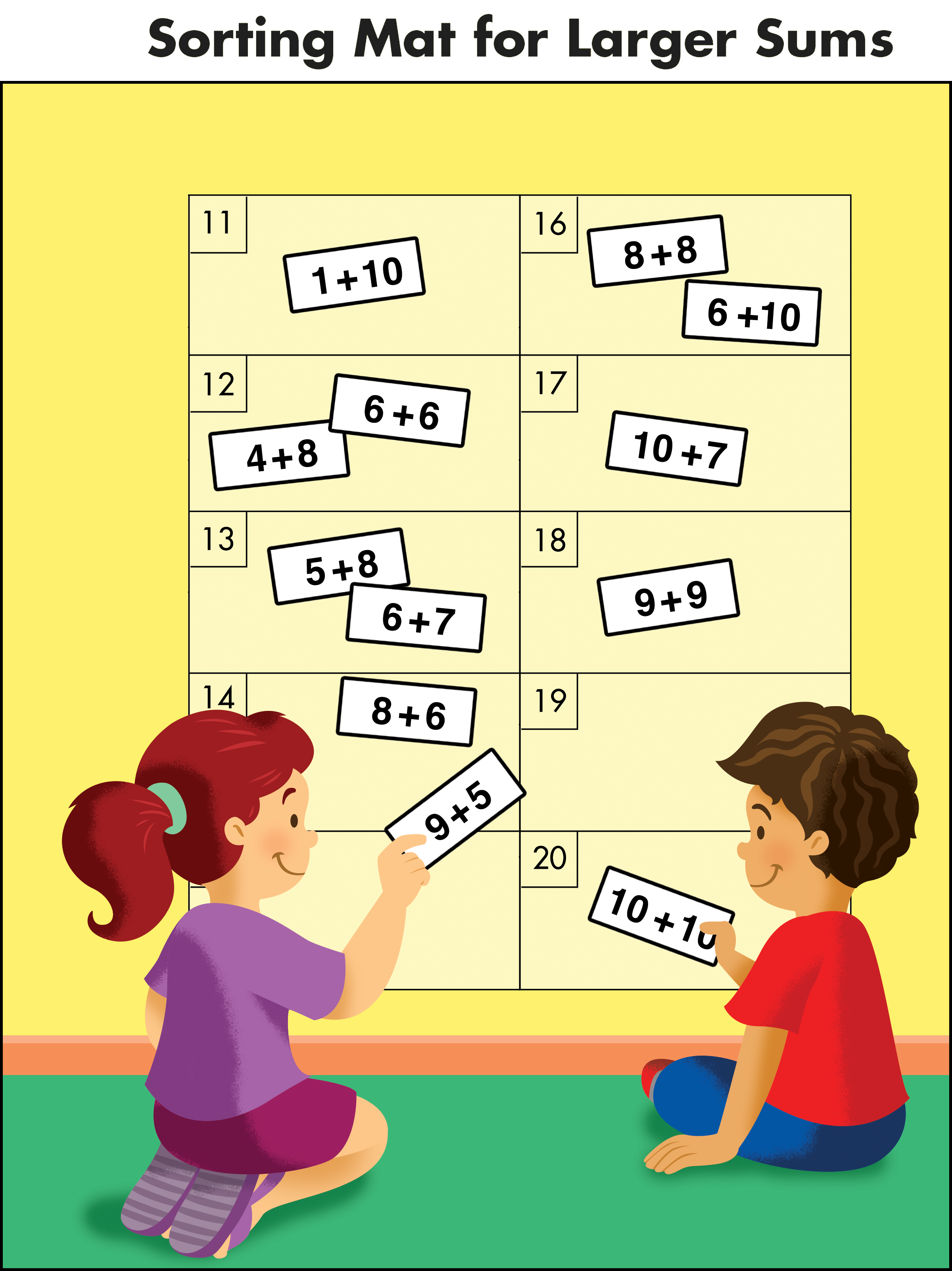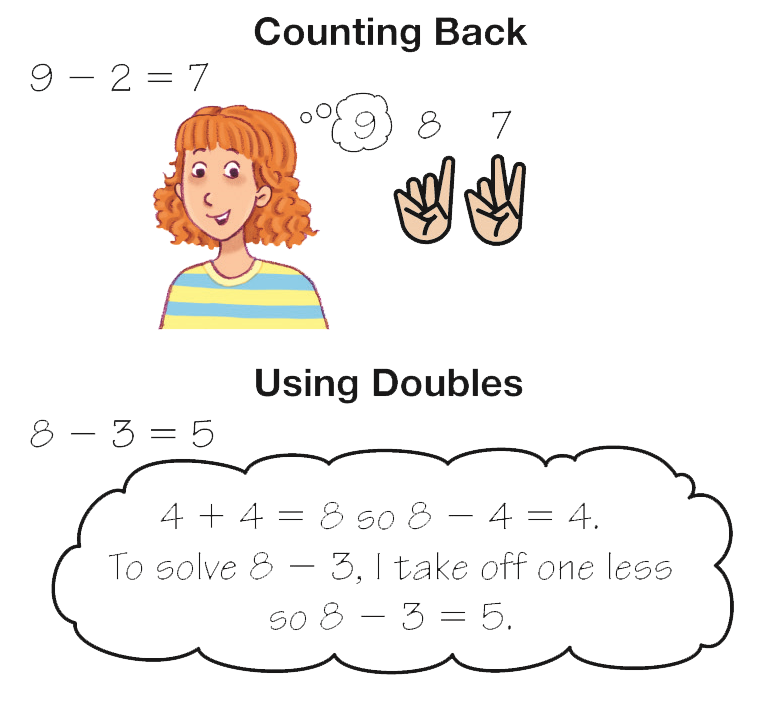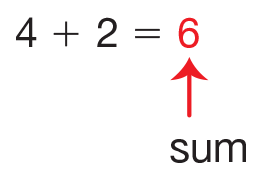During a strategy session, students review strategies they used in previous lessons, develop more strategies for sums greater than 10, and record them on an invented strategies chart. Then they solve problems with larger sums and describe the strategies and tools they use.
Content in this Lesson
- Representing addition and subtraction situations using drawings, diagrams, counters, number sentences, number lines, or ten frames [E2].
- Solving word problems (e.g., join, separate/take away, part-whole, compare) involving two whole numbers whose sum is between 10 and 20 [E3].
- Using mental math strategies and reasoning strategies (e.g., using doubles, using ten, making ten) to solve addition with sums between 10 and 20 and the related subtraction problems [E5].
- Using strategies that apply the properties of addition (e.g., turn-around, compose and decompose numbers) to solve addition and subtraction problems [E6].
- Finding the unknown whole number in an addition or subtraction equation relating three whole numbers [E7].
- Knowing what is important to solve a problem [MPE1].
- Finding strategies to solve problems [MPE2].
- Checking for reasonableness [MPE3].
- Showing or telling how to solve problems [MPE5].
Daily Practice and Problems A–D
Assessment in this Lesson
| ASSESSMENT | EXPECTATION ASSESSED | MATH PRACTICES EXPECTATION ASSESSED |
|---|---|---|
|
Think about Strategies for Solving Problems with Feedback Box Student Activity Book Pages 363–364 |
|
|
|
DPP Item A Addition Flash Cards: Group A Teacher Guide - digital |
|
|
|
DPP Item B Fact Families: Group A Teacher Guide - digital |
|

















